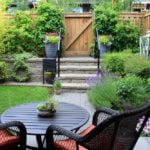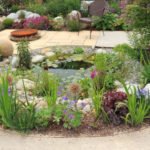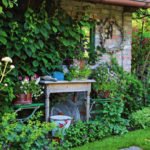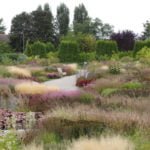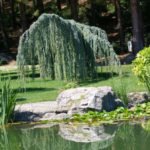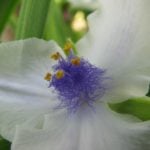In recent years, it has become fashionable to create monochrome compositions from flower beds, where plants are of the same color tone, but of different shades and lightness. Flower beds of the dominant color are often made when plants of the same color range occupy a large area of the composition, and additional plantings are created from plants of contrasting and matching colors. Both the monochrome flower garden and the flower garden of the dominant color look like a single color composition, which is visually perceived better and richer than a hodgepodge of different colors, annoying many with excessive variety and obsession.
However, as many people are engaged in the arrangement of gardens, there are so many opinions about which garden looks better and more advantageous: colorful, with different colors of foliage and flowers, or a garden designed in the same color scheme. Choosing, we are guided either by our own taste, or by the impulses of the soul, or by the advice of a professional. I must say that creating a one-color garden is quite difficult. And not only for amateurs, but also for professionals. However, it is quite real, and it is interesting and tempting.
First of all, it is necessary to thoroughly study the assortment of plants – both floral, and cereal, and trees, and shrubs. And it is necessary to clearly represent the color change in all selected plants during the growing season. It is important to know how they combine with each other, what emotional impact different combinations have on people and in which part of the garden certain plants can be placed.
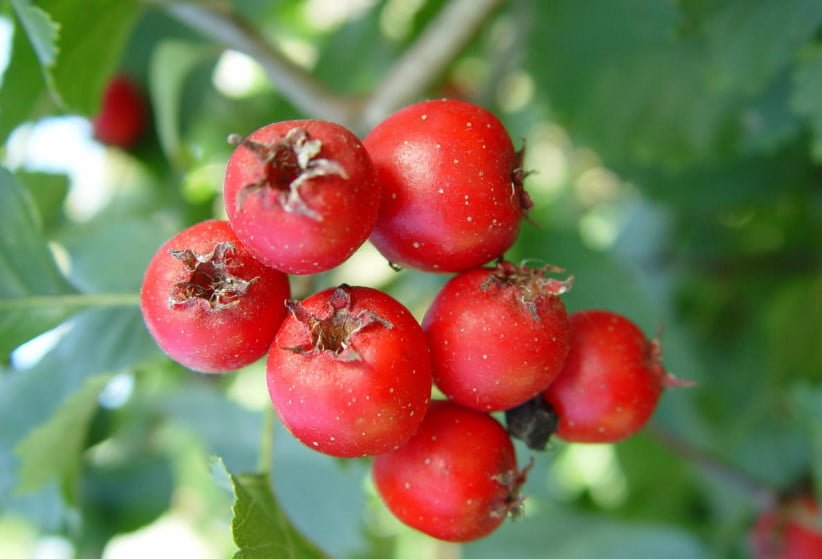
Landscape, stones, lighting, glass and various accessories will be of great help in creating a simple garden.
The monotony of a group, flower garden or garden implies the choice of not only one color tone, but also its shades, which can be both warm and cold. It depends on which tones the selected tone is in the color of the circle, for example, yellow is between orange and green, red is between purple and orange. Therefore, plants of the same color tone, but of different shades are perceived as warm or cold and cause different feelings and associations among the owners and guests of the garden.
In my opinion, it is not easy to create compositions in red tones. It is even more difficult to create a garden with a dominant red color. Not every specialist and owner of the garden will decide on this. This is done by people who are very confident in their abilities, determined, firm and strong in spirit.
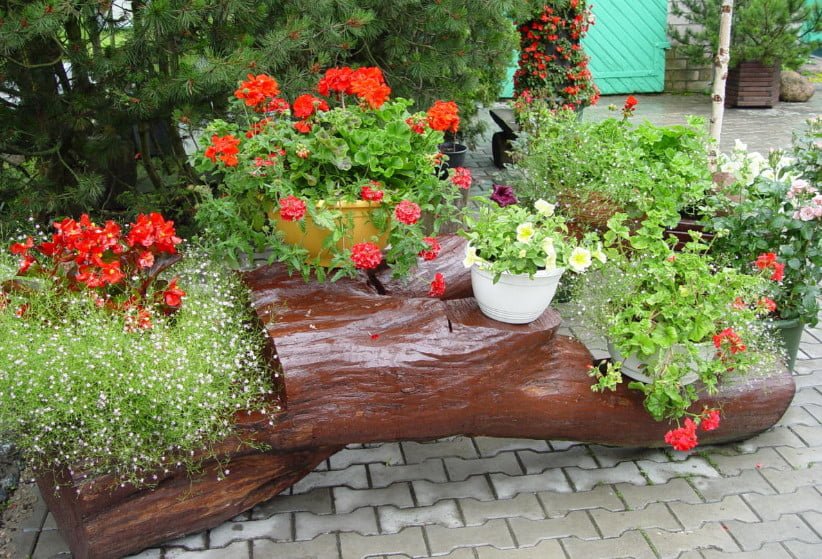
I would like to discuss a little bit about the features of red in terms of color. It’s no secret that all shades of red enliven any composition, because the red color acts excitingly and is a good stimulant. That is why red-flowering plants and plants with reddish, purple, purple-purple leaves are used to create a solemn mood, fun, even pomposity, they can amaze and surprise, impress. Hence the practice of creating flower beds in red tones mainly in the front of the garden. They are especially good for the regular style, which is most often used in the entrance part of the site.
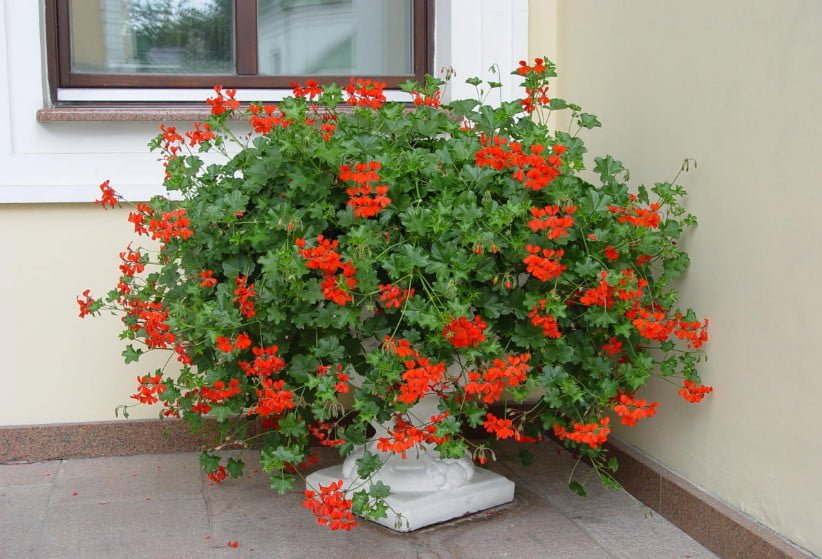
Everyone knows that red is not for a quiet life, not for relaxation; in the presence of red it is almost impossible to relax. Red compositions are good, ceremonious, bright, you can create them provided that there are corners of silence and tranquility in the garden. That is why experts do not recommend using a large number of plants with red flowers in the design of recreation areas, gazebos, privacy zones.
Another feature of the red color is its location in the color circle. When creating a monochrome composition, plants with yellowish-red flowers should not be adjacent to plants with red flowers that turn blue. In flower beds, such color combinations should be softened and soothed by green foliage and lawn grass. It is recommended to separate plants from these groups with greenish ones in order to balance these two shades of red in the compositions.
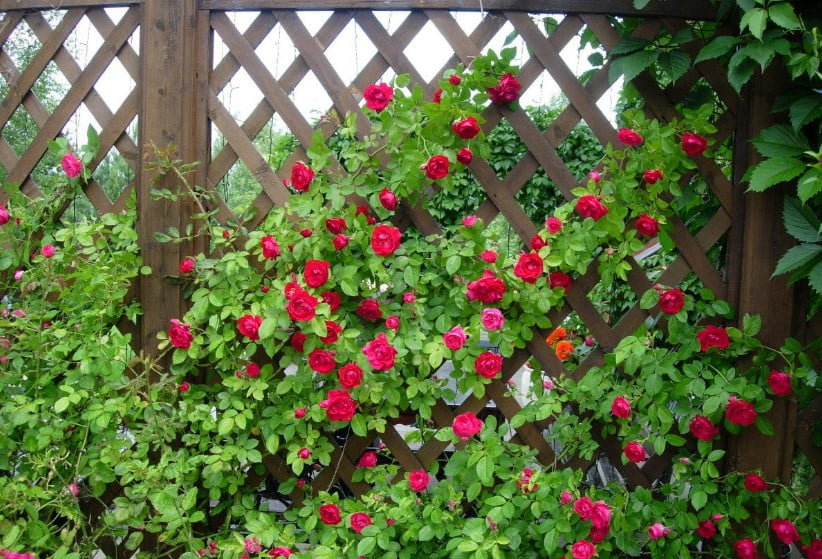
Now, armed with knowledge about the creation of monochrome compositions and the peculiarities of red, you can get acquainted with a private garden located west of Munich in the town of Altotting. I called it “red”. And only then, after a while, when viewing photos, analyzing my impressions and associations, I realized that in this garden, except for red pelargonium, there are no more plants with red flowers. And yet the garden gives the impression of red. Because of what?
Looking at all the corners of the garden (it is small – about 10 acres), I was more and more surprised by the subtle taste of its owner, who, without knowing the color, following his instinct, clearly determined a reasonable amount of red. After all, it was worth going a little too far with red, choosing the wrong colors, and the garden would lose harmony, and the rest places would not be comfortable.
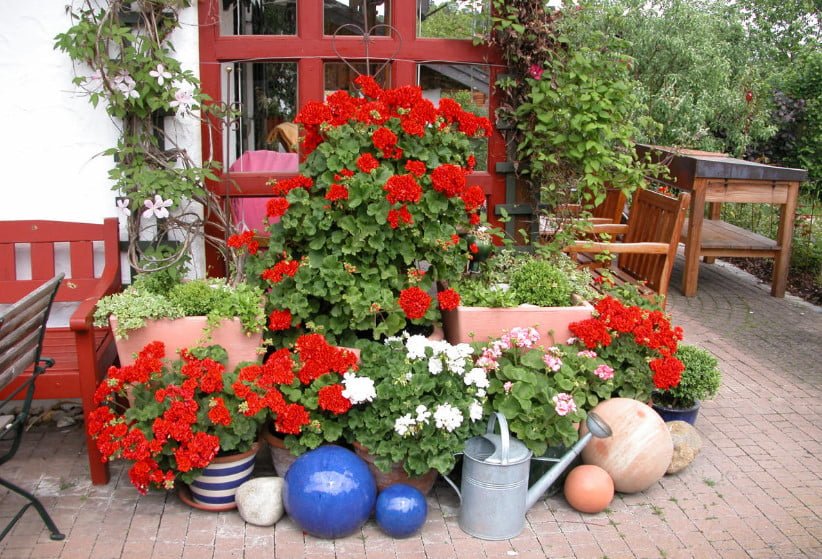
So, the bright pelargonium sets the red tone, which greets everyone at the gate. It is conveniently located at the window of a small house, performing the functions of a water pipe from the outside. Here, at the entrance, only on the other side, against the background of the white plastered walls of the house, red white clematis are curling on a wooden lattice.
The main red color of the garden will manifest itself when you walk along the winding path from the gate, go behind the house. There are several places to relax, made in red. And the red color is present only in accessories: a bench, window frames of verandas, lattice pallets on the windows of the house, mattresses on deck chairs, window shutters of a summer house. Even the glass balls on high pin-legs, stuck everywhere in flower beds and flower beds, are red. The red climax is still given by red pelargonium in pots of different sizes, placed near benches and sun loungers, on the steps of the terrace, at the entrance to the summer house, in the corners of playgrounds.
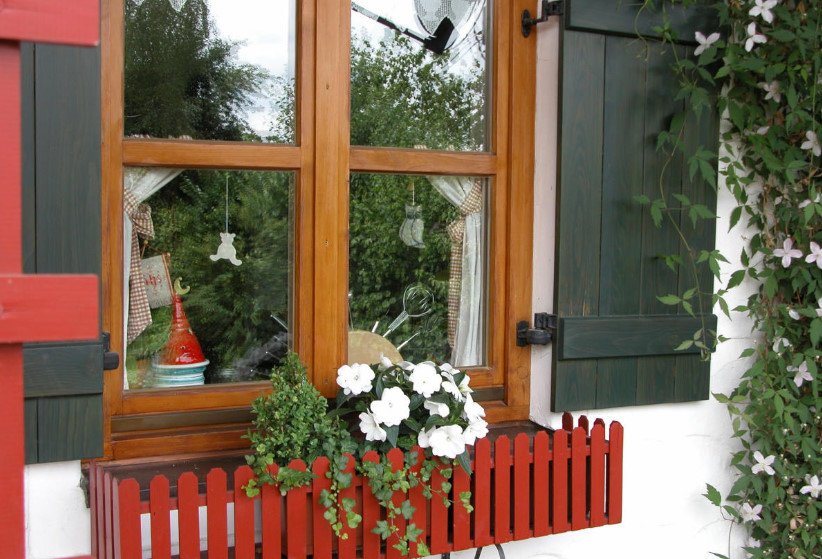
There is quite a lot of red in this garden. Why doesn’t it look sharp and annoying? But because there are two colors next to red – blue and gray. Blue is represented in the form of flower pots, bright stripes on flower pots, as well as large and small decorative balls. Gray, silver shades are represented in garden accessories: watering cans, buckets, pots, stones, pellets, small sculptures, garden furniture, wooden deck. This combination is chosen thoughtfully and carefully, the blue color in this case cools the red, calms it, and for a person creates a rest area for the eyes and a sense of peace. Gray mutes red, makes it not so bright, flashy. Therefore, at all recreation areas, we simply enjoy the scarlet color without getting tired of its pomposity.
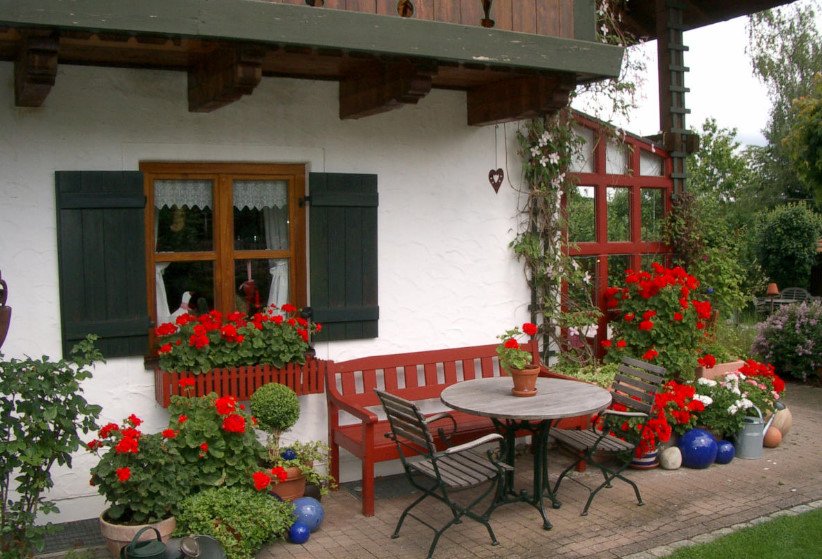
With this combination of colors, you can relax and live fully. Moreover, this garden has everything for such a life: a pond with a wooden deck hanging over it, a barbecue oven, a greenhouse with vegetable beds, flower beds, and picturesque groups of trees and shrubs.
The celebration of red in the garden did not end, pleased the hosts and guests, lasted until late autumn and did not depend on the time of flowering plants, care for various accessories and decorations. The main thing is to pick them up with love and a desire to please your family and guests. This is exactly what we saw in the “red” German garden.









